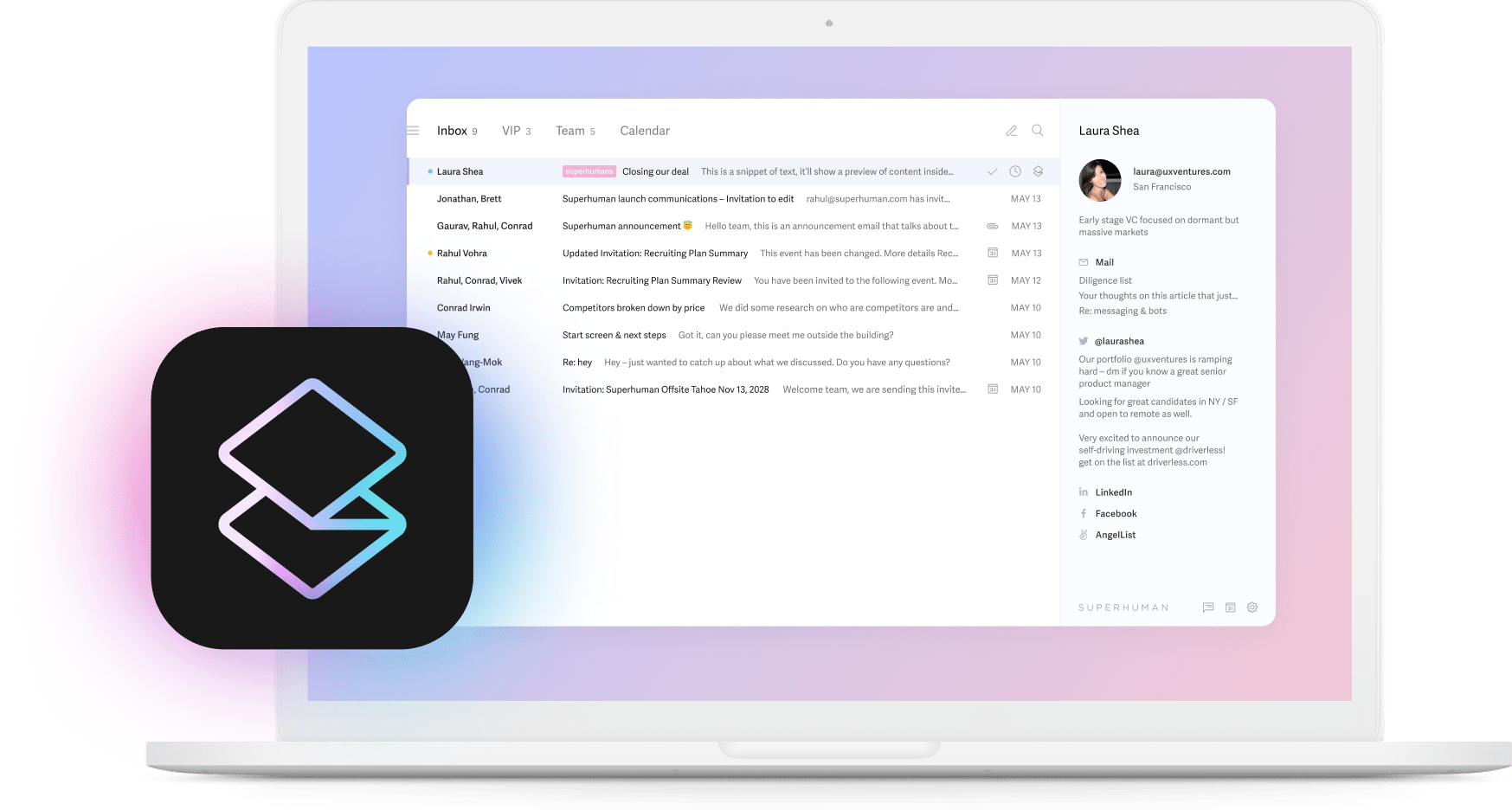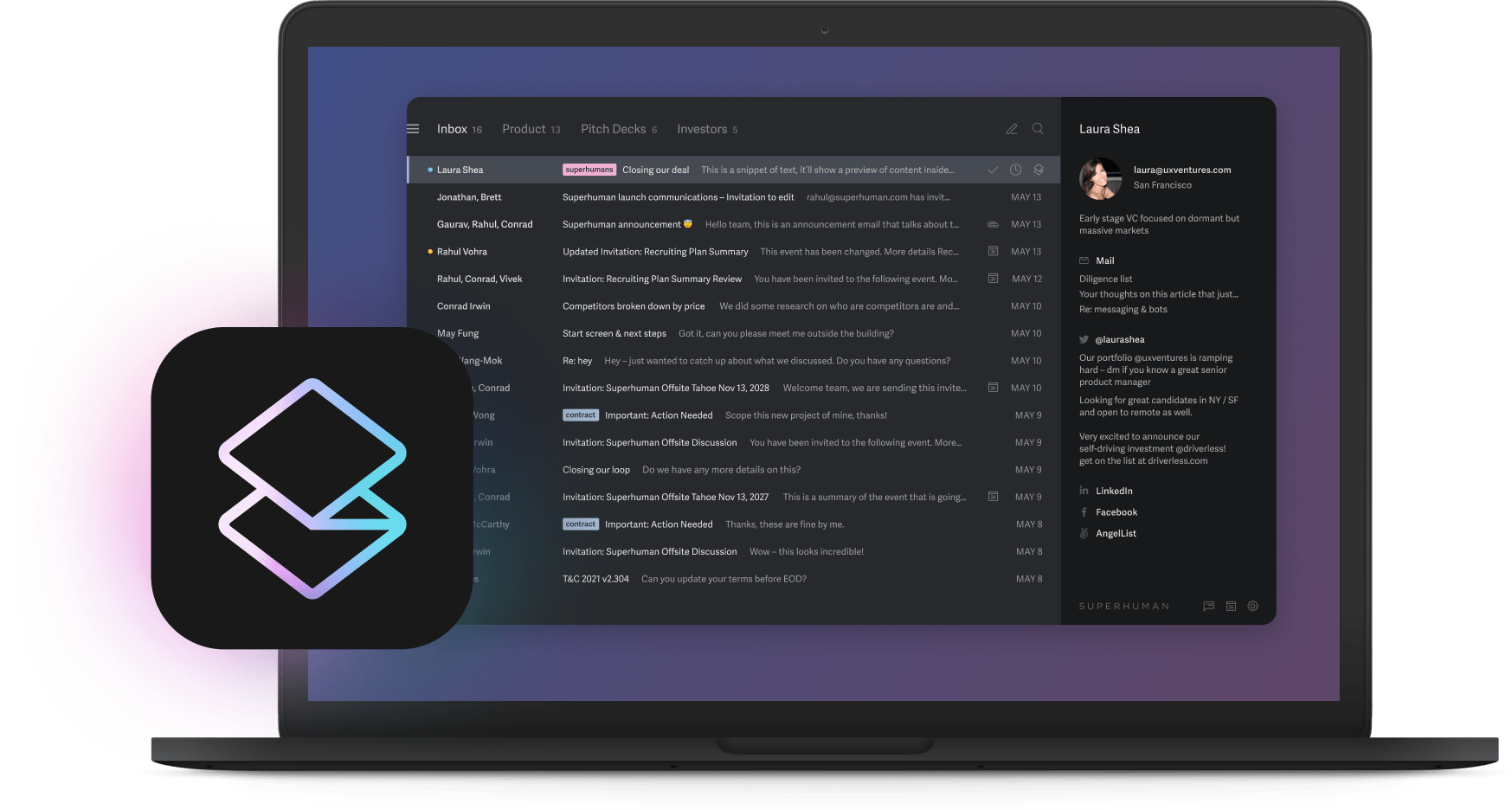
Wake up. Check email. Eat breakfast. Check email. Start work. Check email. And on and on and on. Before you know it, you've opened your inbox 20 times before lunch.
Those pesky emails keep calling you, vying for your attention, and vowing to bring you peace if you just take one quick minute to check in.
It's difficult to resist the urge. Maybe you're worried about missing that important email that could positively (or negatively) impact you or your team, and you don't want to let anyone down. Or maybe you constantly check your inbox because you're afraid that if you don't keep on top of it, it will swallow you up, and you'll never regain control.
Whatever the reason, checking email can become a big distraction that hinders productivity and goal-setting. But, thankfully, we have good news: you can open your inbox without being controlled by it! And in this article, we will show you how to do it.
Why you can't stop checking your email (hint: it's not you, it's your brain)
You know how you feel when you eat chocolate, go out with friends, or eat a scrumptious meal? Your brain rewards you with a release of dopamine whenever you engage in these behaviors, and dopamine makes you feel happy.
Interestingly, the anticipation of new emails or social media notifications can give you that same rush of dopamine. The constant email checks for immediate gratification are dopamine cravings in full force. Many of us also constantly check our phones for new information or stimuli.
As reported by Trevor Haynes in Science in the News, Harvard University, "Smartphones have provided us with a virtually unlimited supply of social stimuli, both positive and negative. Every notification, whether it’s a text message, a 'like' on Instagram, or a Facebook notification, has the potential to be a positive social stimulus and dopamine influx."
So what's the harm in doing a quick email check? It will only take 3 minutes of our time, right? That's what we tell ourselves every time we give in to the distraction.
But those 3 minutes often turn into 30 or more, as you notice more emails need attention, and then oh look, your favorite store is having a flash sale! And then you realize that your inbox is out of control, so you delete a few messages to make yourself feel better and then go back to work. But wait, what was it you were working on?
Now you realize you became distracted and are no longer in the same frame of mind you were before you stepped away to check your email. That "quick" email check robbed you of your productivity. It can take an average of nearly 24 minutes to get back on task once you've become distracted for these extended periods.
The point is that those seemingly quick email checks can hinder your productivity and steal hours of your day. But with a few tweaks, you can reclaim control of your email instead of it controlling you.
How to stop checking email: 4 quick practices to try
Schedule times during the day to review emails
We have to schedule our meetings, calls, and get-togethers to remember them, so why not also schedule dedicated times to check email?
Carve out a block of time on your calendar to review and go through your email. Sticking to this schedule will prevent you from giving in to the urge to check your email outside of your designated time slots.
What time of day you should schedule to review your email really depends on your preferred routine. Think about what makes the most sense for you, is it during work hours only? Before or after your workday? Should you schedule both work and personal email reviews?
Some people suggest waiting until after your morning routine to check email, but for me, that's waiting too long! I'm a first-thing-in-the-morning person, so I schedule "waking time" as one of my email review times and a couple more times during the day around breaks and lunchtime.
I also do not put my work email on my phone. When I get up in the morning, I only check my personal email. But I schedule times during my workday to check my work and personal email inbox.
Regardless of your routine, the goal is to schedule enough email breaks to feel in control of your inbox, so you don't need to check it all day impulsively.
If you need assistance scheduling your day (and your email time), we go into these steps in more detail in our article on calendar blocking.
Don't respond to emails immediately
Just because you open an email doesn't mean you need to respond immediately! So what do you do with it? Set a reminder to action the email at your next email check or during a specific time of day when you have the time to dedicate to it.
Setting email reminders is simple with Superhuman. Hit the letter H on your keyboard (one of Superhuman's many keyboard shortcuts) and tell the app when you want to be reminded of the email.
Superhuman will send you a reminder to action that email at your designated time. Set it and forget it!
You can also prompt Superhuman to remind you only if there are no replies on that email thread. This feature comes in handy for work emails when you're waiting for a team member to respond, and if so, you don't have to worry about replying yourself.
Turn off notifications
Email notifications, social notifications, push notifications, app notifications, texts, phone calls, and more — no wonder we feel like we can't stay in control of our days! Constant interruptions sparking FOMO disrupt our flow and threaten our productivity.
Consider disabling all of your notifications to cut yourself off from impulsively checking your email. If you still want to get notified, mute the notifications instead so they won't disturb you while you work.
Still think you'll be tempted to check your phone even with notifications muted? Me too. I keep my phone silent when I'm in the middle of a project and place my phone across the room where I can't retrieve it quickly. These small changes can make a big difference.
Use blocking apps
If you're having a hard time with FOMO, you might need to take it a step further and block yourself from accessing your email. It seems drastic, but for some of us, it's what we need (and that's okay!).
Once you get accustomed to not checking your emails so often, you can cease using the apps.
Here are some apps that can help you regain control of your email:
- Freedom - blocks websites and apps (like your email) so you can't access them
- RescueTime - get a report of how long you spend on email in a week so you can schedule your time better
- Superhuman (hey, that's us!) - email management software to help you get to Inbox Zero fast and regain control of your inbox
Long-term solutions to getting your email inbox under control
We talked about some new habits you can adopt quickly. But, you'll also need some long-term solutions to keep you from falling back into compulsive email checking. One of the best ways to stop checking emails is to organize and declutter your inbox so you can prioritize important emails and reduce the time you spend on email management. Essentially, these steps are part of what we call "email triage," and doing them regularly can help you regain control of your inbox.
Unsubscribe from irrelevant and unwanted emails
Is every email in your inbox bringing you value or joy? Probably not, especially if you feel overwhelmed every time you visit it.
I get it; it's tough to unsubscribe. What if you need that information in the future?
Here's the thing: If this information hasn't benefitted you in the last 3-6 months, it's unlikely to benefit you in the future. Go ahead and delete emails from this sender. Or hit unsubscribe to quickly declutter your inbox.
Unsubscribing from emails is simple with Superhuman. Just hit Ctrl+U (Cmd+U on Mac) on your keyboard.
Once you unsubscribe, you might want to delete all past emails from this sender. Thankfully, Superhuman has a shortcut for this too. Once you unsubscribe, you'll have the option to archive or delete all emails from that sender. Easy peasy.
Plus, with Superhuman, you can archive the emails instead of deleting them forever. If you think you'll need an email in the future, you can still search for it without having emails cluttering up your inbox.
Organize your email inbox
An organized email inbox will make you feel more in control which can help you avoid the urge to check it constantly. If your email is prioritized and categorized, you'll decrease the time it takes to manage it. Every message you receive will be automatically organized for you once as soon as you enter your inbox.
For example, if you're working on a time-sensitive project, prioritize and categorize those emails so you can access them quickly without rummaging through your inbox.
Automated rules/filters automatically route messages to a folder you designate. You can set up triggers for these emails (by email address or keywords) that signal to the email provider where to send the message for future viewing. You can also set up folders to categorize personal and business emails.
Examples:
- Priorities
- Team projects
- Personnel
- Follow up
- Clients
- Priority newsletters
- Personal shopping
We talk about email organization in more detail in our article on how to manage your email inbox.
Split Inbox (Prioritization on steroids)
Split Inbox is one of Superhuman's features that gives you superpowers because it allows you to split your email inbox into several buckets, aka, splits, and reach Inbox Zero faster than you ever thought possible.
Superhuman's Split Inbox feature makes email prioritization simple. The email app automatically transfers incoming emails into your Split Inboxes without having to prioritize anything.
Here's my own Split Inbox set up as an example:
In addition to my content writing business, I also run an ecommerce store. I use several email accounts, but I forward all the emails into my personal inbox. This is cumbersome because my emails are still staring me in the face when I view my inbox. I tried categorizing with Gmail, but those emails were still in my face because I didn't have a quick system to action them all.
With Superhuman, I set an email filter to automatically send my ecommerce order emails to my Orders Split Inbox. When Superhuman detects my trigger for my writing emails (my professional email), it automatically ports them into my Lady Content split. Now I can triage emails inside each split, and my primary inbox stays clutter-free.
I was also able to organize more than a decade of emails (80,000 to be exact) and reach Inbox Zero for the first time.
Thankfully, setting up splits was really easy and you'll be advised and guided through it during your onboarding.
Take control of your email inbox with Superhuman
You don't have to be captive to your email inbox. Nor does email management need to be a frustrating, time-consuming experience.
Superhuman empowers users to get through their inbox blazingly fast, so they have more time to do the work that matters.
My favorite part? With Superhuman, you can action every email within half a second and get to Inbox Zero faster than you ever thought possible. With one keyboard touch, fly through each message and feel lighter with every action.






